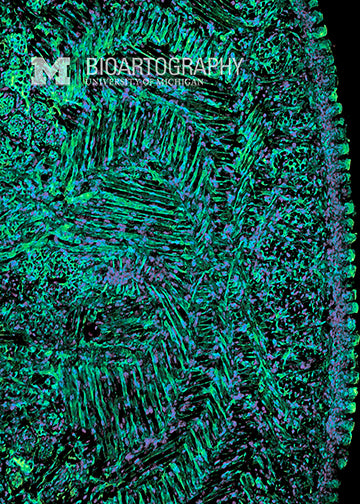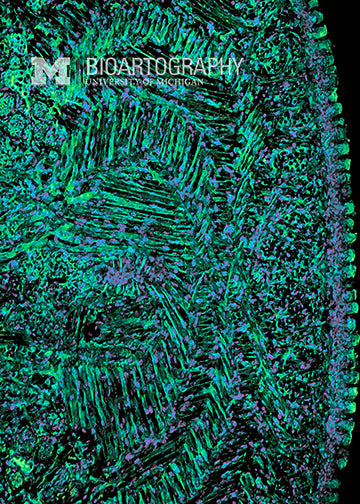

Amanda Zacharias, Ph.D., Postdoctoral Fellow, Ophthalmology and VisualSciences, University of Michigan Medical School
The image is a cross-section of a mouse tongue stained to identify B-catenin (green), a molecule that functions like glue to stick cells together. At the top are the taste bud papillae; these structures will allow the tongue to sense salty, sour, bitter, sweet, and umami (or savory). In the body of the tongue are concentric layers of alternating muscle fibers. Note that bundles of long straight muscle fibers run in several different directions; this enables the tongue to perform complex maneuvers that are essential for speech and for chewing food.
